Imagine stepping into your backyard and finding a charming gazebo that you’ve crafted with your own hands, a perfect blend of comfort and style that welcomes both lively gatherings and quiet moments of reflection. Outdoor living is more than just an extension of your home; it’s an opportunity to create a personal sanctuary that enhances your lifestyle and brings joy to everyday moments. Whether you’re a seasoned DIY enthusiast or just beginning your home improvement journey, the allure of constructing your own gazebo is within reach.
In this article, you’ll discover seven affordable DIY gazebo designs that cater to a variety of tastes and skill levels. From rustic retreats to modern marvels, each design is crafted to inspire your creativity and guide you through the process with ease. Get ready to transform your outdoor space into a captivating oasis, where innovation meets relaxation, all while staying within budget.
Choosing Cost-Effective Gazebo Materials
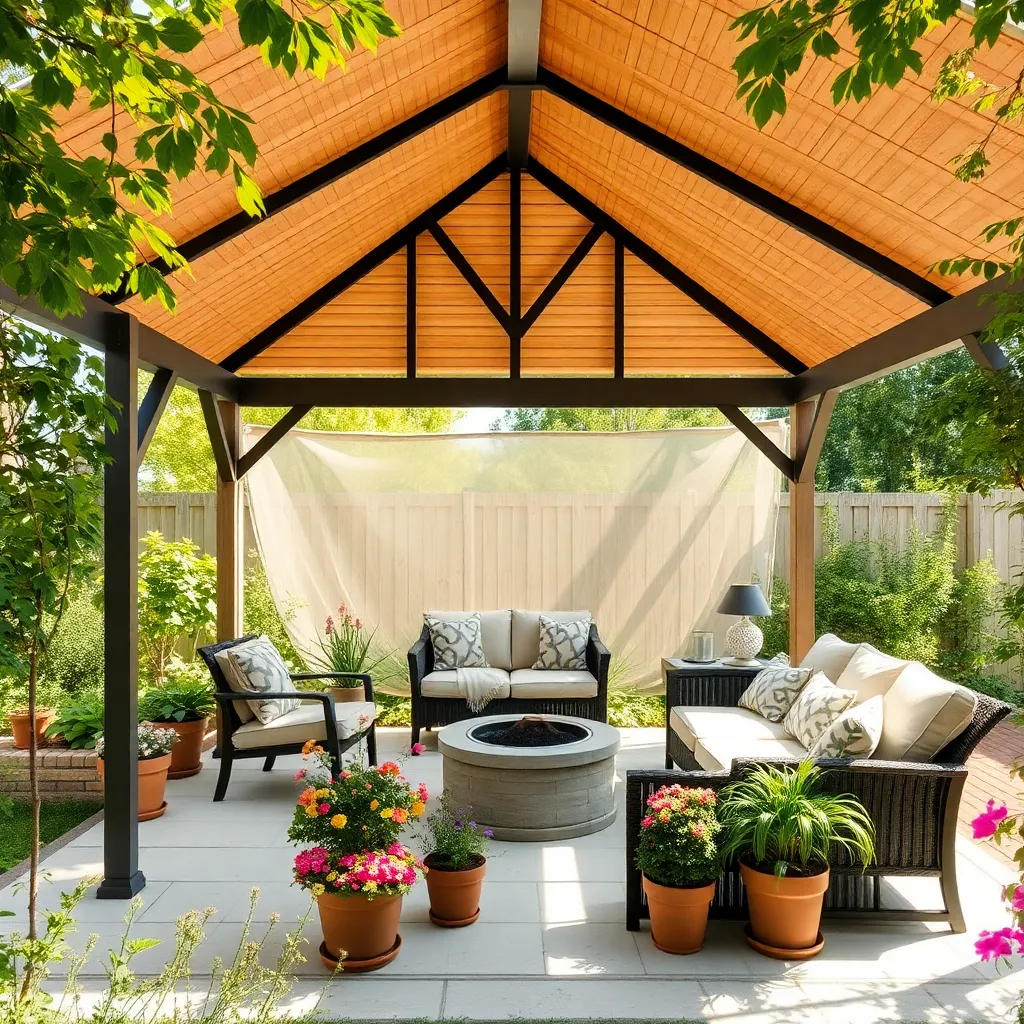
When selecting materials for a cost-effective gazebo, consider using pressure-treated lumber, which is both durable and budget-friendly. This type of wood is resistant to rot and insects, making it a practical choice for outdoor structures. For the roof, polycarbonate panels offer an affordable yet sturdy option, providing protection from the elements while allowing natural light to filter through.
To add elegance without breaking the bank, incorporate decorative metal brackets or trims made from aluminum, which is lightweight and rust-resistant. Consider using gravel or concrete pavers for the flooring—both are economical and easy to install. Beginners can start with a simple square or rectangular design, while more advanced DIYers might explore octagonal shapes for added visual interest.
Step-by-Step Hexagonal Gazebo Plan
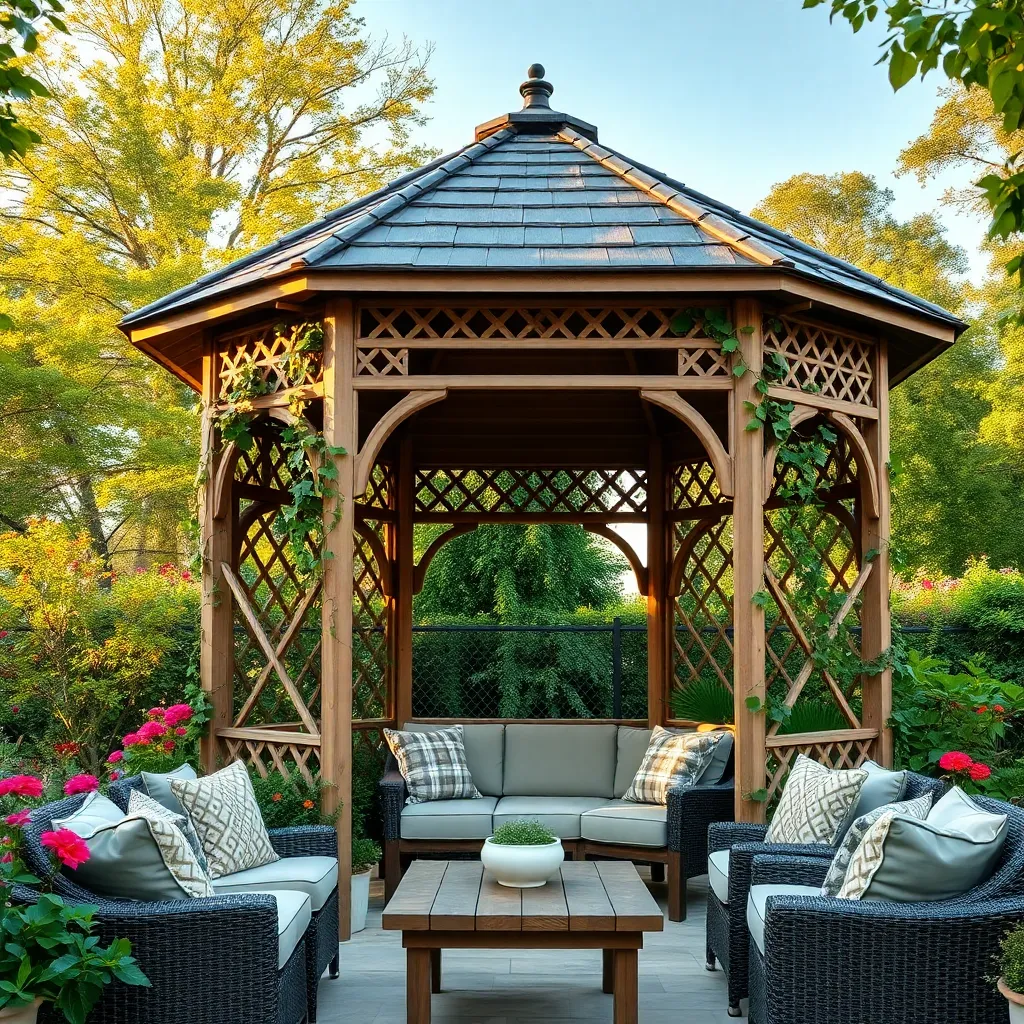
To build a hexagonal gazebo, start by selecting durable yet affordable materials like pressure-treated lumber for the frame and cedar or pine for the roof. You’ll need to measure and mark a circle where the gazebo will sit, with a radius of about 6 to 8 feet for a spacious design. Begin by constructing the base using six equally sized wooden joists, connected at the center point and securely anchored with concrete footings for stability.
Once the base is set, assemble the vertical posts and connect them with diagonal braces for added support. Ensure precision by using a level to check each component’s alignment as you go. For the roof, cut six identical rafters to create the hexagonal shape, joining them at the peak with a central hub. Cover the roof with weather-resistant shingles or metal sheets. Add finishing touches with a coat of protective sealant and consider incorporating benches or a simple table inside for functionality and comfort.
Building a Rustic Wooden Gazebo
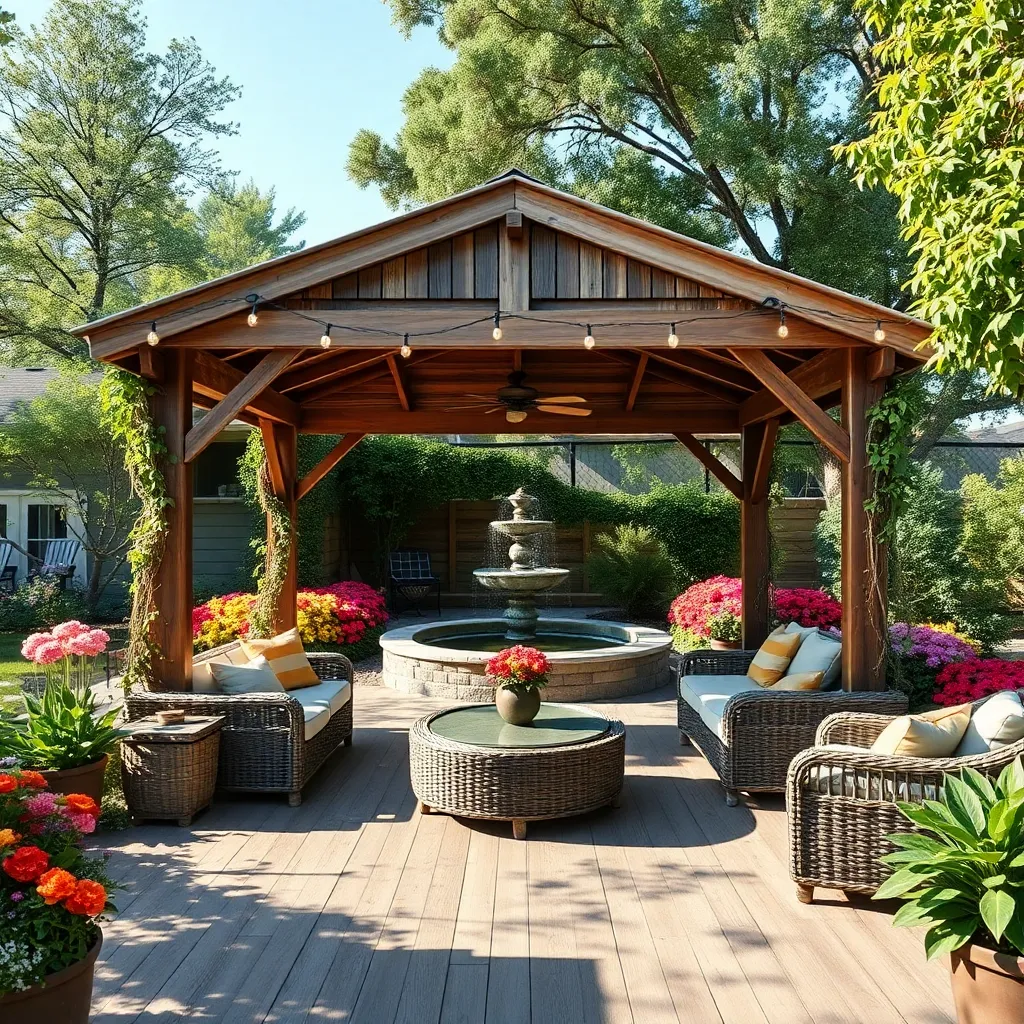
Creating a rustic wooden gazebo is a charming way to enhance your outdoor space. Begin by selecting durable wood such as cedar or redwood, which naturally resist decay and insects. Opt for a square or rectangular design to simplify construction, using 4×4 posts for the corners and 2×6 beams for the roof framework. Beginners can use a pre-cut gazebo kit to streamline the process, while more experienced builders might prefer to design from scratch, allowing for custom dimensions and features like integrated benches or planters.
Adding rustic elements, like exposed beams and a natural wood finish, will emphasize the gazebo’s earthy feel. Use tongue and groove boards for the roof, ensuring a snug fit that withstands weather. For added stability, anchor the gazebo with concrete footings or deck piers. Incorporate decorative touches such as climbing plants or fairy lights to personalize your space. Remember, measure twice, cut once—precision is key to a successful, long-lasting structure. Whether you’re a novice or a seasoned DIYer, this project is a rewarding way to enjoy the outdoors.
Modern Minimalist Gazebo Design Ideas
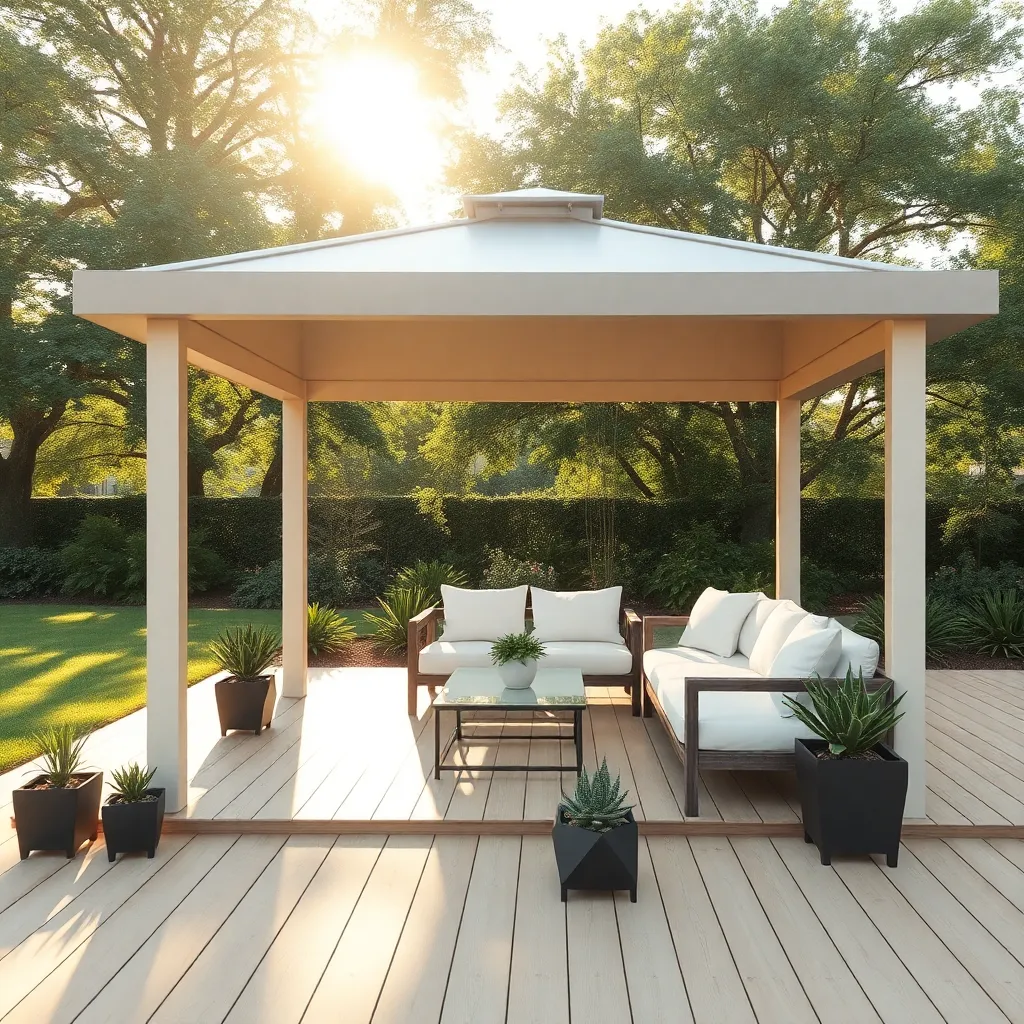
Embracing a modern minimalist gazebo design can transform your backyard into a sleek, contemporary retreat. Start by choosing materials like aluminum or steel for a clean, streamlined look that requires minimal maintenance. Opt for a simple, open-air structure with a flat or slightly angled roof to emphasize the minimalist aesthetic. For a more advanced touch, consider incorporating glass or acrylic panels to balance open space with shelter, allowing natural light to flow through while providing protection from the elements.
To enhance the minimalist vibe, select a neutral color palette with shades of gray, white, or black, which can elegantly complement your garden’s natural surroundings. Keep the design uncluttered by using integrated seating options like built-in benches or modular furniture that can be easily moved or stored. If you’re handy with tools, consider creating your own seating from lightweight materials like teak or composite wood. For a touch of personalization, add a few strategically placed planters with simple, sculptural plants like succulents or ornamental grasses to maintain the modern theme without overwhelming the space.
Crafting a Cozy Corner Gazebo
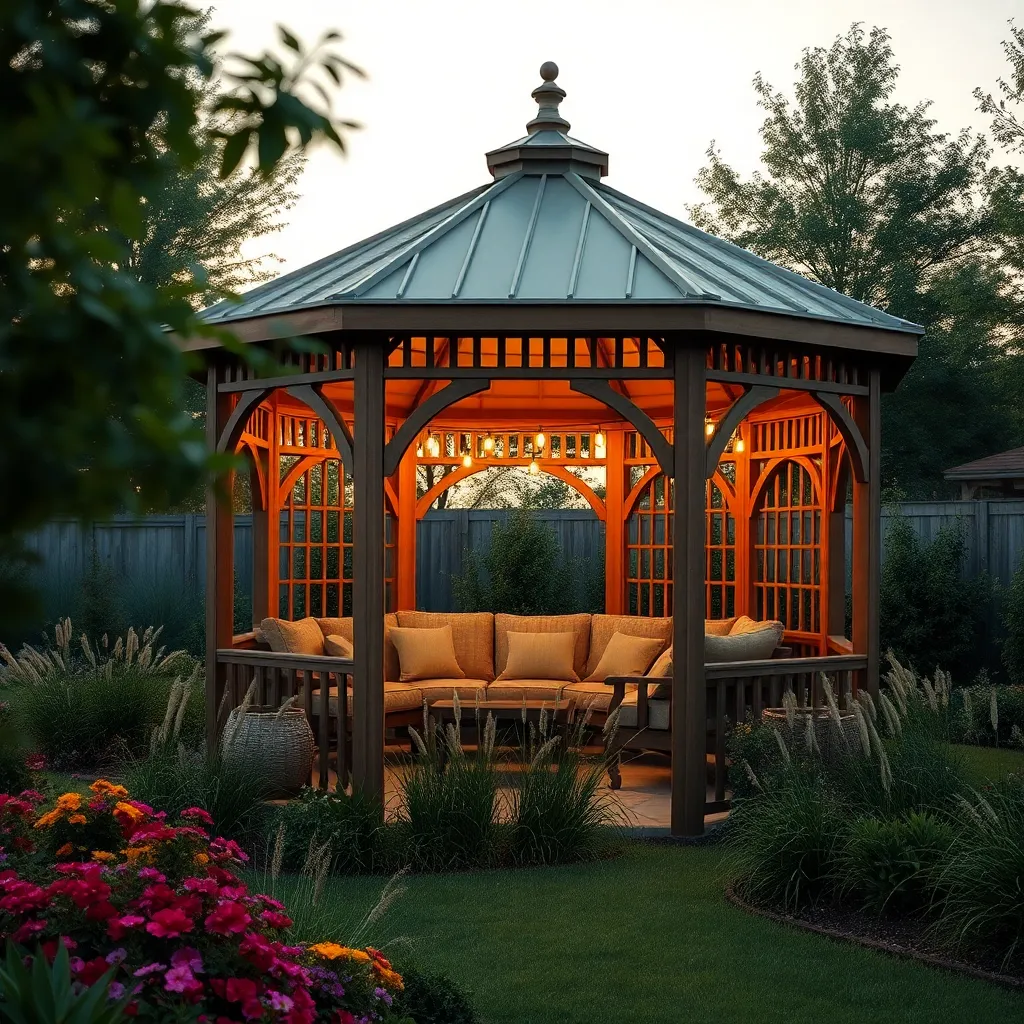
Creating a cozy corner gazebo can transform your outdoor space into a serene retreat. Start by choosing a location that offers a balance between sunlight and shade, ensuring comfort throughout the day. You’ll need materials like treated lumber, which is durable and suitable for outdoor use, and a weather-resistant canopy fabric. Consider a hexagonal or octagonal layout to maximize space and add visual interest. For beginners, pre-cut gazebo kits are available, simplifying the construction process with step-by-step instructions.
To enhance the coziness, incorporate design elements like built-in benches or planters along the perimeter. Opt for a neutral color palette for the structure, which harmonizes with the natural surroundings. Advanced builders might add intricate woodwork or lattice panels for extra character. Ensure your gazebo has a stable foundation by using concrete footings, which provide durability and stability. Finally, install solar-powered string lights or lanterns to create a warm ambiance, perfect for evening relaxation or entertaining guests. By following these tips, you’ll craft a charming outdoor haven that’s both functional and inviting.
Enhancing Stability and Durability
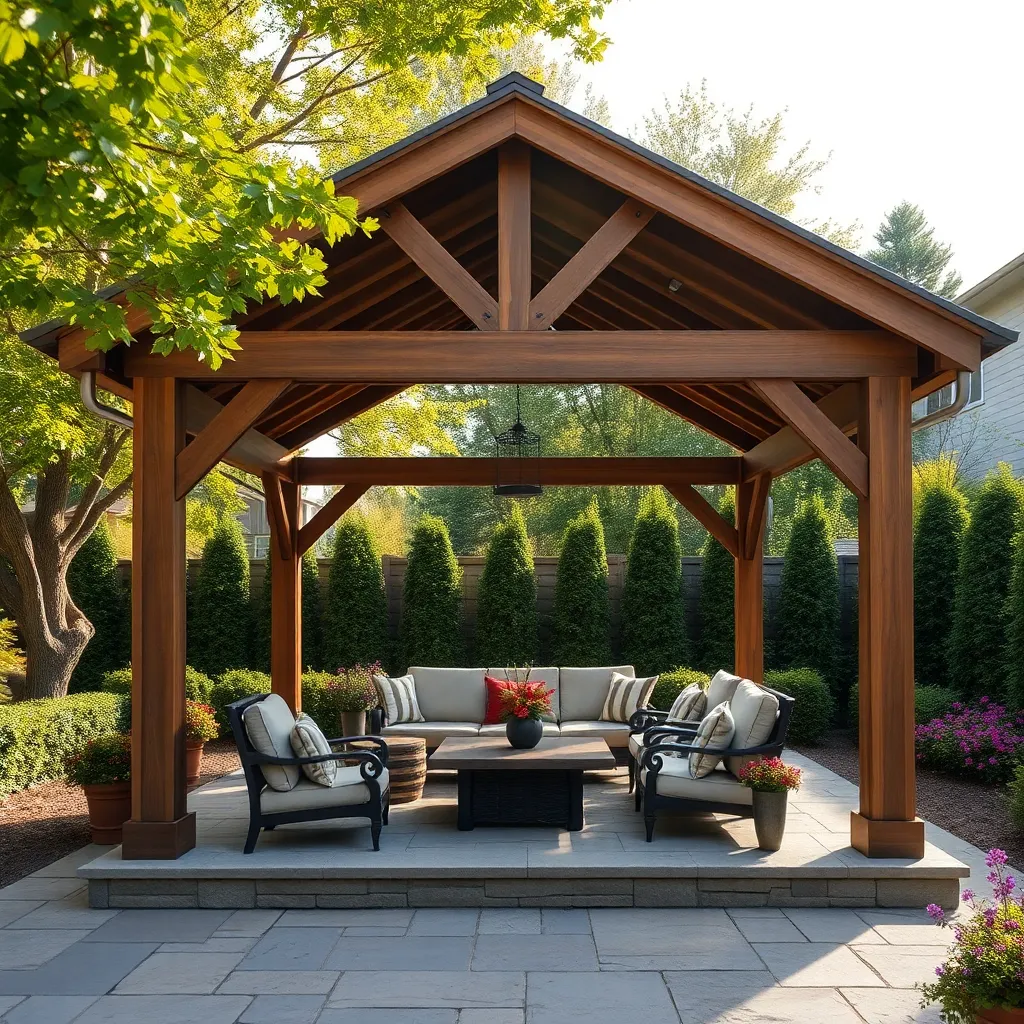
To ensure your DIY gazebo stands the test of time, consider using pressure-treated wood or cedar for the frame, as these materials are naturally resistant to rot and insects. Anchor your gazebo securely by using concrete footings, which can either be pre-cast or poured in place, providing a solid base that will withstand wind and weather. For beginners, setting the posts in concrete is a straightforward way to start, while more advanced builders might explore using metal brackets for added stability.
Maximize durability by incorporating a proper roof design that directs water away from the structure. Opt for a sloped roof with shingles or metal panels, which are both effective and easy to install. Ensure all joints and connections are reinforced with galvanized hardware, which offers rust resistance. Additionally, apply a weatherproof sealant to all wood surfaces to guard against moisture damage, keeping your outdoor haven looking fresh for years to come.
Adding Personal Touches to Your Gazebo
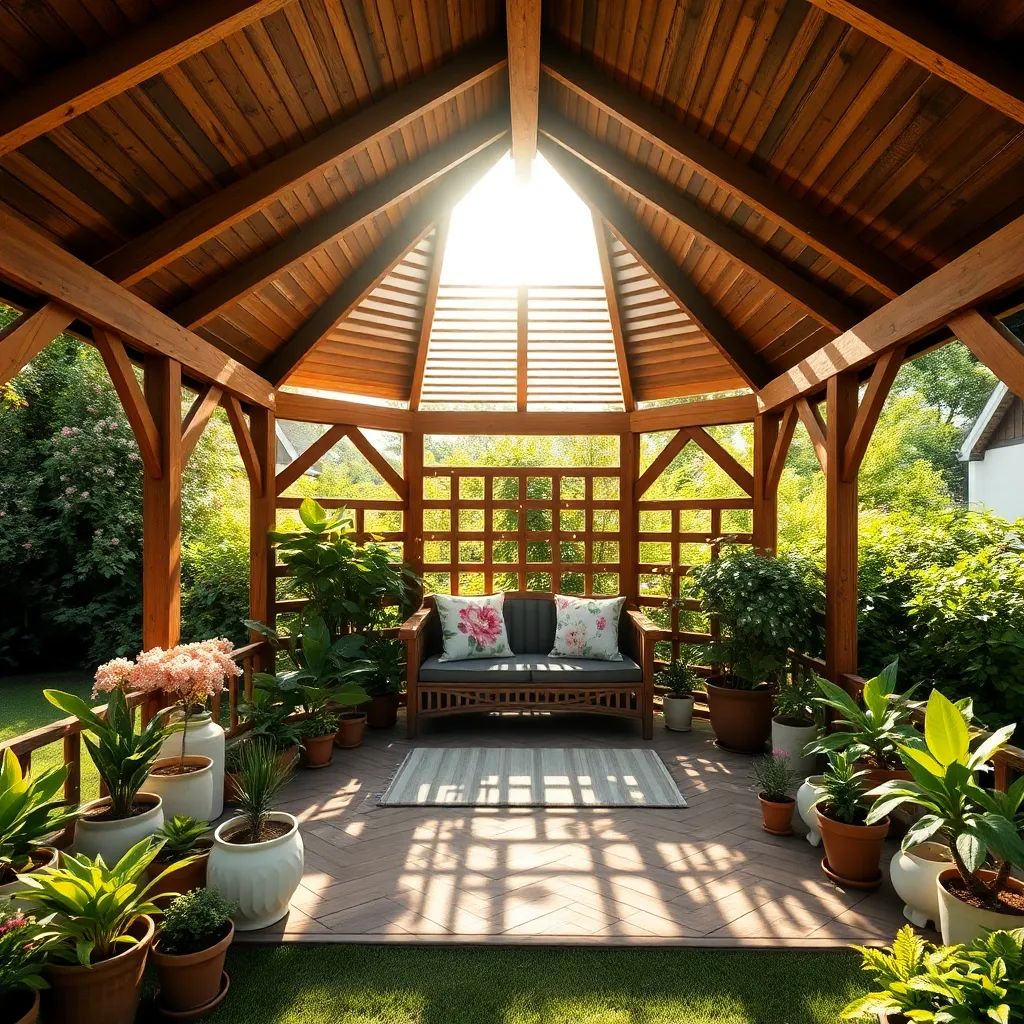
Personalizing your gazebo can transform it from a simple structure into a charming outdoor retreat. Start by considering the materials and colors that reflect your style. For a rustic look, opt for natural wood finishes and soft, earthy tones. If you prefer something more modern, consider incorporating metal accents and bold, contrasting colors. Adding string lights or lanterns can create a warm and inviting ambiance for evening gatherings. Beginner tip: Use weather-resistant paint or stain to enhance both aesthetics and durability.
For those looking to add a creative flair, think about incorporating custom elements like a built-in bench or planter boxes. These additions not only enhance functionality but also allow for seasonal decoration, such as vibrant flowers in summer or cozy throws in winter. Advanced DIY enthusiasts might explore installing a decorative screen for added privacy or a retractable canopy for adjustable shade. When adding these features, ensure they are securely attached and weatherproof to withstand the elements. By thoughtfully personalizing your gazebo, you’ll have a unique and enjoyable outdoor space that reflects your personality and meets your needs.
Conclusion: Creating Beautiful Outdoor Spaces
In exploring the ‘7 Affordable DIY Gazebo Designs You Can Build,’ we delved into key relationship concepts such as teamwork, communication, creativity, adaptability, commitment, patience, and shared joy. Each gazebo design not only offers a unique architectural flair but also serves as a testament to the power of collaboration and mutual support in building something beautiful together. As you stand on the brink of enhancing your outdoor space and, simultaneously, your relationship, consider choosing one design to start with this weekend. Grab your partner, a set of tools, and let the building begin!
Remember, every plank you lay is a metaphor for the foundation of your relationship—strong, stable, and crafted with care. Be sure to save this article as a handy resource for revisiting these valuable insights and sparking future projects. Together, you can transform your surroundings and your relationship, one project at a time. In the journey of love, the structures we build today become the cherished memories of tomorrow. Embrace this opportunity, and watch your relationship flourish as you create something extraordinary together.
